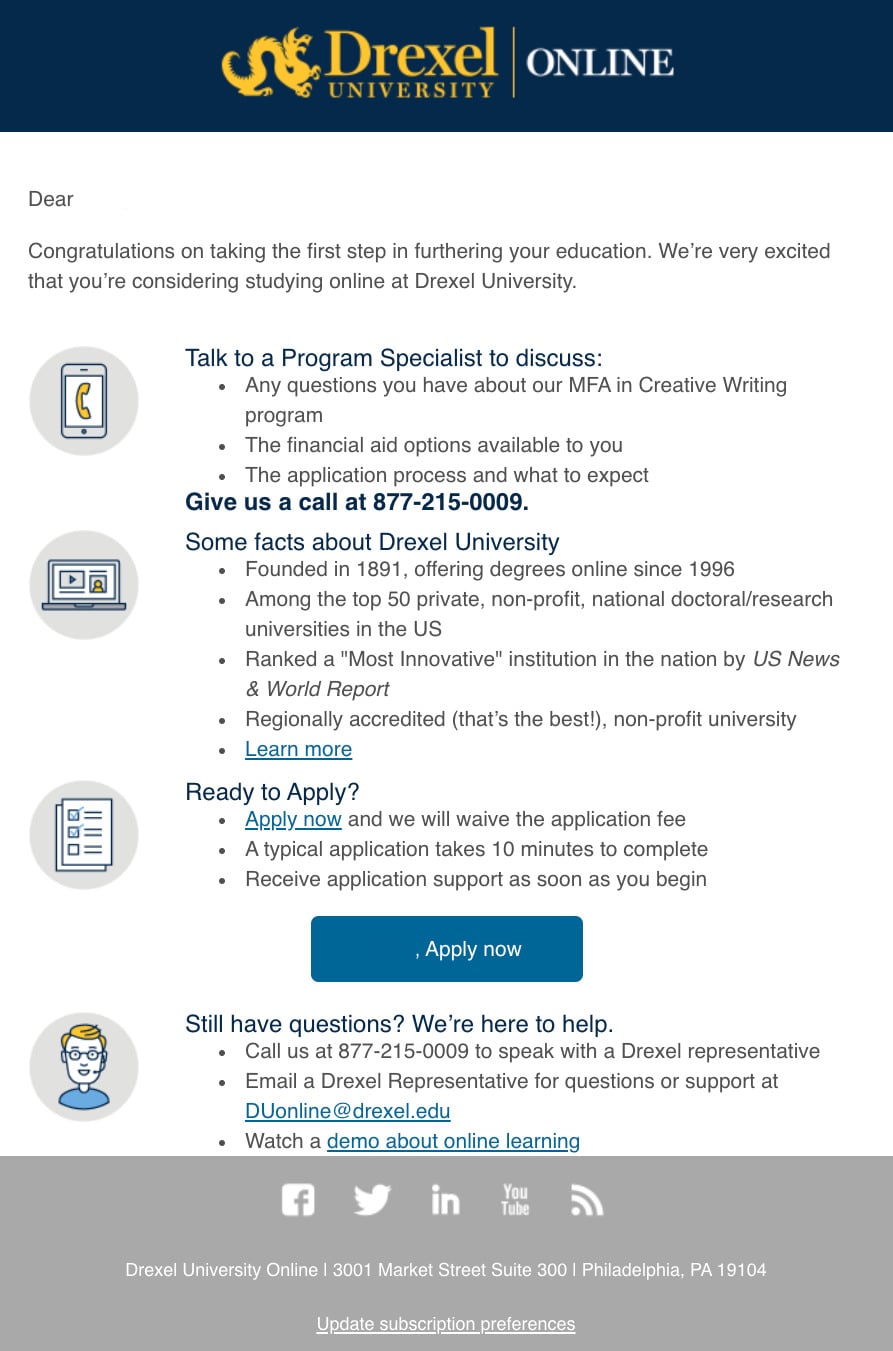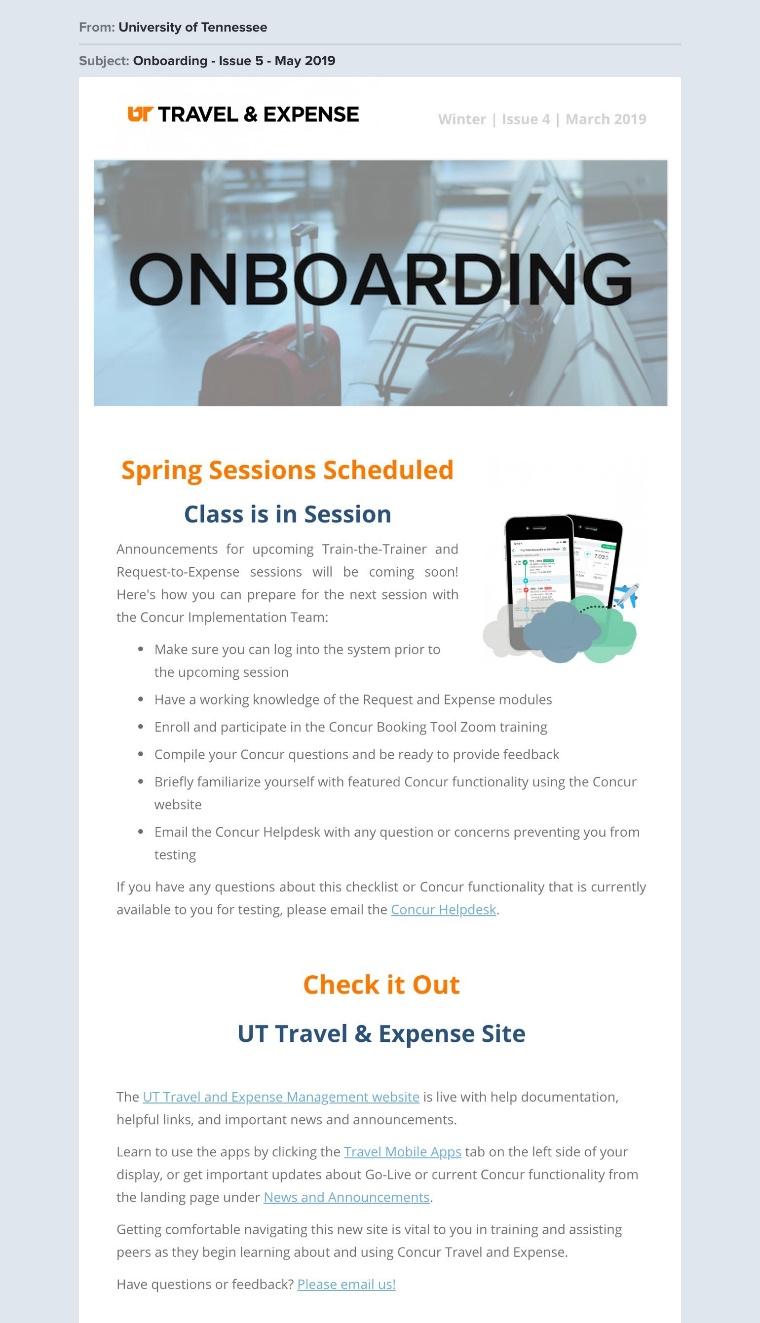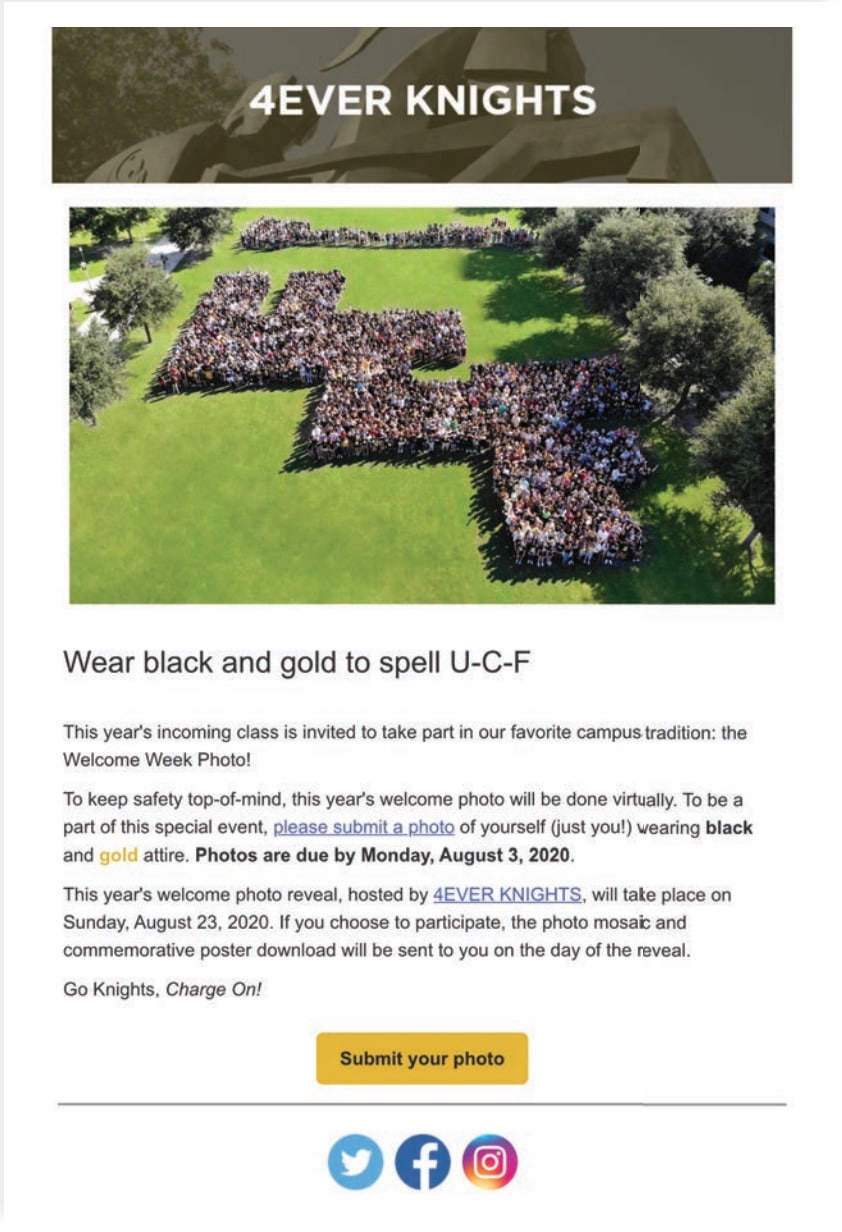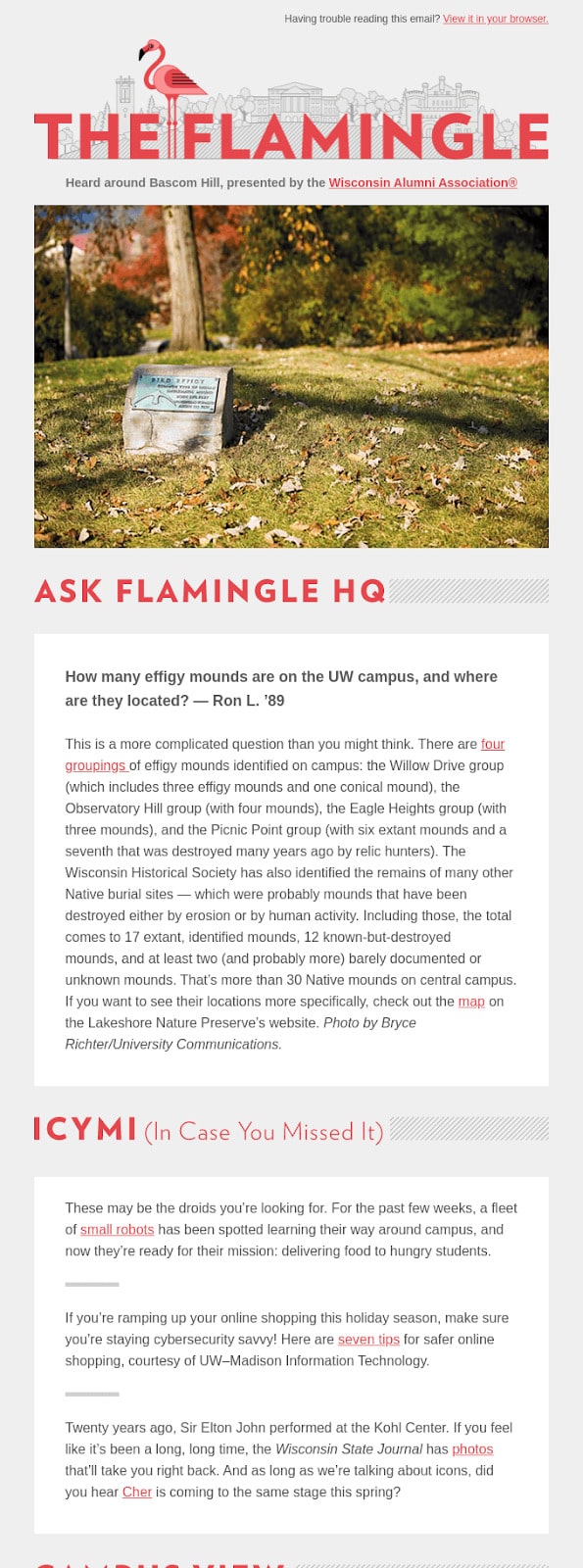5 of our favorite welcome journeys for universities
Higher education faces the unique challenge of reaching a wide-ranging target audience.
From alumni and current students to high school guidance counselors and prospective students, universities must contact people who are part of their past, present, and future. Each of these audiences has needs that require individualized messaging.
And email just so happens to be an effective tool to help higher education overcome these challenges.
So, how do you accomplish this? The key to any successful email campaign is audience segmentation. Identify your higher ed audience and categorize them by characteristics. Then, develop messaging that resonates with each category.
Segmenting higher education emails isn’t a big hurdle. People provide their information when they subscribe to your lists. So with the right resources, you can easily create customized emails that provide you, and your readers, value.
Segmenting is especially helpful when it comes to developing welcome emails. No matter the stage of a student’s journey, there are opportunities for welcome emails.
These communications are the foundation of your relationship with your student body, and we’re here to help you craft them the right way. Below, we’ve listed our favorite higher education welcome journeys and what makes them successful.
Why is a welcome journey so important?
Higher education welcome journeys are the first contact a student receives once they’ve signed up for your marketing list. These emails create a positive impression and welcome readers into their involvement with your school, whether they’re a prospective student or an alumni member.
Navigating a university’s processes and programs can be overwhelming. Your welcome journey campaign can provide assurance and guidance. This gives readers confidence in their decision to invest their time and money into your school.
Welcome campaigns yield an average open rate of 50%. That’s 86% higher than standard campaigns. Students are eager to hear how you can help them enjoy a successful and fulfilling college experience.
5 great examples and why we love them
Welcome emails are beneficial to every target group in your contact list. This is how incoming students are introduced to your school’s culture and identity. It’s how alumni can maintain involvement in university news and current events. Here are five welcome journeys we love and what makes them successful.
1. Enticing prospective students
Your student’s journey begins when they register for your email updates. At that point, it’s up to you to get them excited about attending your school.
A welcome email sets the level of expectation for their experience. Use the information they provided in the registration process to create personalized automated emails that address their specific needs and concerns.
Create content based on the individual’s circumstances. Provide information about the degree they want to pursue. Incorporate testimonials from current students and alumni that portray true campus life. Determine whether they’re still exploring options, or whether they need a final push to consider your school.
Whatever the situation, develop an email that resonates with them and where they are in their college selection journey. This helps keep your university front-of-mind. It not only establishes a solid foundation for future communications, it also begins an ongoing relationship that lasts well past their graduation date.
Deakin University sent this email to high school students who had just passed their Australian Tertiary Admission Rank (ATAR) – a mandatory test to pursue undergraduate courses in Australia–and shown interest in applying to their school. The message is directed when college selection is critical. They let readers browse classes to visualize what life would be like as a Deakin student.
Their message is also heavy on branding. Their university logo is prominently located at the top of the email. They appeal to their teenage audience with their use of bright colors and simple messaging. They’ve clearly targeted their audience with personalized, branded messaging, which builds trust, brand identity, and the likelihood of recruitment.
Source: Really Good Emails
2. Maintaining an applicant’s interest
Just because a prospect has applied to your school doesn’t mean they’ve committed to attending. Once you receive an applicant’s contact information, it’s time to begin nurturing that relationship.
Navigating the application process can be overwhelming and confusing. Send valuable information that helps them in their process. Provide links to relevant landing pages on your school website. Offer direction by guiding them through their next steps.
About 25% of students transfer to another university. Build excitement and engagement early on by delivering relevant information to the right people at the right time. Segment your contacts by field of study. Distribute information about placement rates, scholarship availability, internship opportunities, and after-school activities. This creates buzz and helps future students feel confident that they’ve made the right choice.
In the example below from Drexel University, the reader showed interest in learning more about one of the school’s graduate programs. Drexel expressed gratitude for their consideration, provided resources to help answer any questions, and stuck in some nice-to-know facts about their university.
Source: Drexel University
3. Transitioning new students
A student’s first day of school can be both exciting and nerve wracking. A new school is a fresh beginning, where a world of possibilities and unknowns await. Make the transition a smooth one for your new students by welcoming them with a warm and inviting email. Ideas include:
-
Send a message from their department head.
-
Include links to resources that would ease potential concerns.
-
Attach a campus map.
-
Offer move-in information and registration dates.
-
Provide a point of contact they can reach out to with questions.
-
Share information about fun events happening around town.
-
Invite new students to attend social activities where they can make friends.
Promote an environment of inclusion and let them know that your school is excited to have them. This kind of welcome journey helps to develop your school’s image and solidifies your reputation.
The University of Tennessee welcomes students with a helpful email with useful information. Recipients learn about the upcoming programs. They can follow easy-to-read steps about how to prepare for campus life. There are links to resources if they have questions. This kind of messaging soothes concerns and builds confidence.
Source: University of Tennessee
4. Keeping current students connected
Welcoming prospective and new students is crucial–as is the welcome journey for current students.
Continue earning their loyalty with emails that keep them aware of what’s taking place around campus. Keep them informed about events, registration deadlines, and campus happenings.
Because so much cannot be done in-person this year, you can use email to build camaraderie among schoolmates. Feature student interviews and photos, highlight teacher bios, or announce student-led initiatives. By involving them in what’s happening, they can feel more invested in the success of their community–even from their homes.
Each year, the University of Central Florida gathers new students into the letters “UCF” and takes a photo. This year, with concerns around the coronavirus pandemic, they’re doing it virtually. This way, students can still get involved in campus traditions and feel more connected to the campus’ social life.
Source: Emma
5. Maintaining alumni involvement
A student’s journey doesn’t have to end after graduation. In fact, alumni are an important element of a university’s success. They’re an invaluable resource for volunteerism, monetary support, and future enrollment.
Alumni emails help keep graduates involved in your school’s community. Ask outgoing students for their personal contact information so you can stay in touch beyond their enrollment period. Survey them to get data about jobs and careers. Reach out to seek mentors for new students. Maintain connections by inviting them to reunions.
The University of Wisconsin’s Alumni Association excels at keeping alumni connected. Their fun weekly email, The Flamingle, keeps readers involved in current school activities and helps them get to know other alumni as well. Their efforts continue to strengthen school loyalty and engagement long after their students have left the campus.
Source: Really Good Emails
Wrap up
Welcome journeys are an important way to develop and maintain personal connections with past, present, and future students. An effective welcome email campaign can be successful in:
-
Enticing possible students
-
Maintaining an applicant’s interest
-
Transitioning new students
-
Keeping current students connected
-
Maintaining alumni involvement
Welcome emails encourage connectivity and engagement at every stage of a student’s journey. They enable you to build trust and loyalty, and they promote an ongoing, mutually beneficial experience for students and universities alike.
Email is a crucial channel for recruiting, alumni, news, athletics, and more. We can help your university use email in the most effective way for you. Contact us today.
MOST RECENT ARTICLES
Want to engage your audience and grow your brand? Try Emma's robust easy-to-use product today.


















